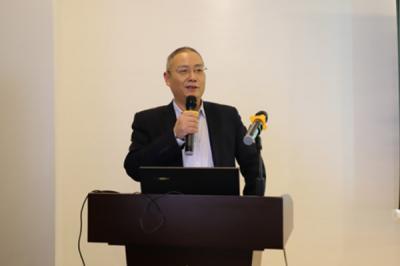Uf technology is a membrane separation technology between microfiltration and nanofiltration, with an average pore size of 3 to 100 nm, and has functions such as purification, separation, and concentration of solutions. Its retention mechanism mainly includes the sieving effect and electrostatic effect of the membrane. The filter medium is an uf membrane. Driven by the pressure difference on both sides, only low molecular weight solutes and water can pass through the uf membrane, thereby achieving the purpose of purification, separation and concentration.
Uf membrane technology is the latest water treatment technology. Its technological advancement and principle priority make it different from ordinary water treatment technologies and have various advantages compared with other water treatment technologies. The first is that the uf membrane technology has good stability and good heat resistance. After the filtration is completed, there are very few insoluble impurities in the generated water body. The second is the filtration quality of water that can be achieved high quality through uf membrane technology. During the filtration process, the suspended solids in the water body can be effectively removed without the action of coagulants, thereby realizing high-quality water filtration.
Uf membrane technology not only has high efficiency and good effect, but also has a very low cost, which is caused by its principle and the composition of the uf membrane itself.
There are many kinds of wastewater in the chemical fiber industry that can be treated and recycled by ultrafiltration. There are many kinds of dye wastewater with complex composition, mainly including colored wastewater containing salt and organic matter; chlorinated and brominated wastewater; organic wastewater containing slightly acid and alkali; colored wastewater containing cations such as copper, lead, chromium, manganese, mercury, etc.; Sulfur-containing organic waste water. Wastewater is one of the most difficult industrial wastewaters to treat due to its large volume, high concentration, high chroma and high toxicity. Wool scouring wastewater is one of the most polluted wastewaters in the textile industry. Wool scouring wastewater contains a large amount of suspended solids, grease and synthetic detergents, among which the main pollutant is lanolin. Lanolin is a raw material for daily chemical and pharmaceutical industries, as well as a good preservative and lubricant, with high economic value. The traditional method of recovering lanolin has a low recovery rate, while the use of ceramic uf membrane technology to treat wool scouring wastewater has achieved good results. Many wool spinning mills and scouring mills now use uf to treat wool scouring wastewater. This process includes four systems: pretreatment, ultrafiltration concentration, centrifugal separation and water reuse. Compared with the traditional centrifugal process, the recovery rate of lanolin is increased by 1 to 1. 2 times.
Welcome to click here to get uf membrane price from JIUWU membrane.




 +86-25-58849045
+86-25-58849045
 +86-25-58749295
+86-25-58749295
 jiuwu@jiuwu.com
jiuwu@jiuwu.com
 No. 9 Park Road, Pukou District, Nanjing City (Sanqiao Factory)
No. 9 Park Road, Pukou District, Nanjing City (Sanqiao Factory) Call us on:
Call us on:  Email Us:
Email Us:  No. 9 Park Road, Pukou District, Nanjing City (Sanqiao Factory)
No. 9 Park Road, Pukou District, Nanjing City (Sanqiao Factory)

 English
English 한국어
한국어 français
français русский
русский Español
Español

